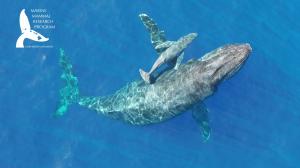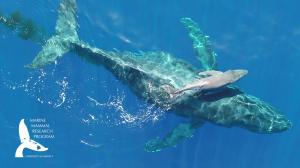UH marine mammal research captures rare video of newborn humpback whale
VIDEO NEWS RELEASE
University of Hawaiʻi at MānoaLink to video and sound (details below): https://bit.ly/2SjbVfo
What: Rare high-quality drone video captured by the UH Marine Mammal Research Program of a newborn humpback whale calf and mother.
-
This is the closest (estimated within 20 minutes) that the researcher has been to a live birth in 25 years.
When: January 20, 2019
Where: Between Maui and Lānaʻi
Who: Lars Bejder, director, Marine Mammal Research Program, Hawai‘i Institute of Marine Biology, University of Hawai‘i at Mānoa, was the drone operator
Why: Part of the programʻs study of the effects of climate change, human activities and prey availability on whales and dolphins.
Other facts:
-
The program recently launched a new website (https://www.mmrphawaii.org/) and social media platforms (Twitter and Instagram: MMRP_UH, Facebook: MMRPUH, Youtube: MMRP UH) to build awareness.
-
To help achieve its mission, the program is also accepting donations [https://www.mmrphawaii.org/donate] to fund research initiatives and student scholarships. All donations are tax-exempt.
-
Key collaborators for this video included:
-
Ultimate Whale Watch: https://www.ultimatewhalewatch.com/
-
Oceanwide Science Institute: http://oceanwidescience.org/
-
Applied Research Laboratory of the University of Hawai‘i https://www.hawaii.edu/arl/
-
VIDEO:
BROLL (1:35): (all video MUST have: NOAA permit: #20311-01)
1 shot drone release
1 shot calf with mother, blood in the water
1 shot Lars Bejder
1 shot whale and calf
1 shot drone release, Lars controlling operations
3 shots whale and calf
SOUND:
Lars Bejder, Director, Marine Mammal Research Program, University of Hawai‘i at Mānoa (:21)
“This is quite extraordinary–within I would say 20 minutes of the humpback female giving birth to her calf. We arrive up to the animals and there is still blood in the water and the calf very uncoordinated, but pretty much as close as we could get to a live birth.”
Bejder (:14)
”I think everybody can appreciate these kinds of footages, and it brings us closer to these animals and gives us a really majestic view of these creatures, and yeah I think it’s pretty spectacular.”


